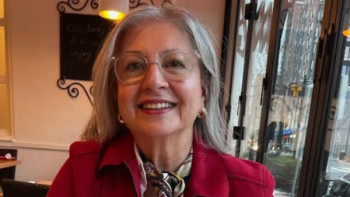
Intensifying Rituxan for Diffuse Large B-Cell Lymphoma Treatment Does Not Improve Health Outcomes
Heightening the dose of the targeted drug Rituxan (rituximab) during the first four cycles of the R-CHOP regimen does not improve outcomes in treating patients with diffuse large B-cell lymphoma, the phase 3 HOVON-84 trial found.
Intensifying the dose of the targeted medication Rituxan (rituximab) as part of a multiple-drug regimen for the treatment of patients with diffuse large B-cell lymphoma (DLBCL) does not improve health outcomes in previously untreated patients with DLBCL, a recent study found.
The study sought to improve the effectiveness of the standard treatment for the disease, known as R-CHOP (Rituxan plus the chemotherapies cyclophosphamide, doxorubicin and vincristine in addition to the steroid prednisone). Improvements in effectiveness are needed because 40% of patients who receive the regimen find that their disease resists it or that their cancer relapses, often fatally, even though DLBCL is curable in many cases, the researchers wrote.
DLBCL, the most common type of non-Hodgkin lymphoma, is an aggressive cancer that affects B lymphocytes, which are white blood cells that help the body fight infection. The disease can develop in lymph nodes or outside them in any organ of the body.
After phase 2 studies showed that variations to the Rituxan schedule as part of R-CHOP improved outcomes for elderly patients with poor prognosis, the team, consisting of researchers from the Netherlands, Denmark and Belgium, decided to test the concept in a randomized, phase 3 trial. The HOVON-84 trial tested whether intensified Rituxan during the first four two-week cycles of R-CHOP would improve health outcomes in previously untreated adults with DLBCL. Because Rituxan levels gradually rise in blood to plateau in the fifth round of R-CHOP, the scientists hypothesized that boosting the presence of the drug in patients’ bodies earlier could make it more effective.
In the trial, 574 patients with stage 2 to 4 DLBCL, ages 18 to 80 and treated at 68 centers, were assigned to six to eight cycles of standard two-week R-CHOP with or without intensification of Rituxan (RR-CHOP) throughout the first four rounds. The primary goal of the study was to measure the rate of complete remission after treatment.
The researchers found that complete remission was achieved in 254 (89%) of 286 patients in the R-CHOP arm versus 249 (86%) of 288 patients in the RR-CHOP arm. After a median follow-up of 92 months, the three-year failure-free survival rate, meaning the percentage of patients who had not experienced relapse, was 74% in the R-CHOP arm compared with 69% in the RR-CHOP arm.
At three years, the percentage of patients who had not experienced disease worsening was 74% in the R-CHOP arm versus 71% in the RR-CHOP arm. At five years, those rates changed to 69% and 64%, respectively. Overall survival at three years after the start of treatment, meaning the percentage of patients remaining alive at that time, was 81% in the R-CHOP arm versus 76% in the RRCHOP arm.
Results did not differ in subgroups categorized by gender or age.
Patients between ages 66 and 80 years experienced significantly more toxicity during the first four cycles in the RR-CHOP arm, especially neutropenia and infections, the researchers reported. Ninety-six patients in the R-CHOP arm and 114 in the RR-CHOP arm died; deaths were due to side effects of treatment in nine in the R-CHOP group and eight in the RR-CHOP group, with the main cause being infection.
“In our study, … rituximab levels were indeed consistently higher during the first four cycles in the RR-CHOP-14 arm than in the R-CHOP-14 arm, and they remained higher during further treatment,” the authors concluded. “However, this did not translate into better short- or long-term outcome for the complete study population.”





